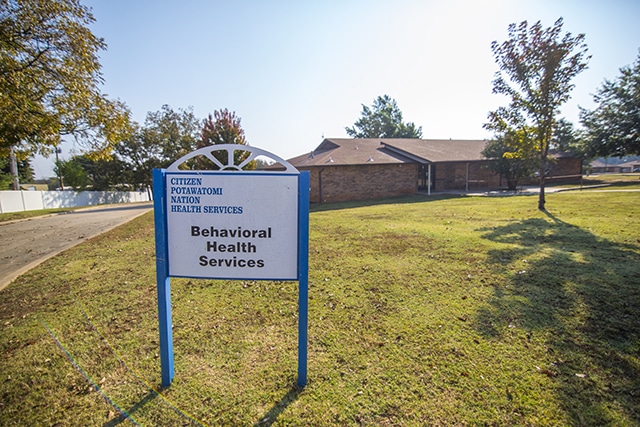 For an issue so prevalent in American society, what is commonly known as substance abuse is a difficult issue to address. The challenge stems from the issue being widely misunderstood. Unlike cancer or pneumonia, it is one of the few recognized diseases which carries a stigma of embarrassment or shame. In recent years though, both the medical and mental health fields have made an effort to alter that perception by changing the term to substance use disorders in the DSM-5 Manual, the mental health sector’s preeminent text.
For an issue so prevalent in American society, what is commonly known as substance abuse is a difficult issue to address. The challenge stems from the issue being widely misunderstood. Unlike cancer or pneumonia, it is one of the few recognized diseases which carries a stigma of embarrassment or shame. In recent years though, both the medical and mental health fields have made an effort to alter that perception by changing the term to substance use disorders in the DSM-5 Manual, the mental health sector’s preeminent text.
“The thing to remember is that you are not alone if you are experiencing a substance use problem,” explained Dr. Stumblingbear-Riddle, Behavioral Health Coordinator for Citizen Potawatomi Nation Health Services.
According to the 2013 National Survey on Drug Use and Health an estimated 22.2 million adults were classified with a substance use disorder, also known as SUDS. 8.4 million had co-occurring SUDs with an accompanying mental health issue, while 10.8 million American workers have a SUD.
Staff members at the CPN Health Services Behavioral Health program like Dr. Stumblingbear-Riddle are at the forefront of the issue, diagnosing and treating patients from all walks of life.
“It is so common that most people are either directly impacted by a substance use disorder or know someone who is either in an active addiction or in recovery from the disease,” said Dr. Stumblingbear-Riddle. “As in many communities with major health disparities, substance use disorders also impact Native American communities.”
The rates facing the Indian Country are stark in comparison to that of the United States average. Native Americans adolescents have a higher rate of past cigarette use than the country average by more than 6 percent, cannabis use by more than 6.5 percent and prescription drug abuse nearly doubling the national average.
When it comes to illicit drugs and alcohol, 18 percent of Native American adults required treatment compared to the 9.6 percent nationally. The causes of addiction are varied as well, meaning that just saying “no” is not as simple as it sounds. Chances of addiction increase when there is a family history of substance use disorders, other mental health issues such as depression, anxiety and posttraumatic stress disorder, chronic health problems and traumatic events.
Yet these factors can be addressed with the help of mental health professionals.
“The good news is that substance use disorders are preventable, treatable, and people do recover,” she emphasized. “A mental health professional can help you develop a treatment plan to assist in your recovery or the recovery of your loved one. It isn’t a one size fits all approach either. There are different levels of care depending on the severity of the substance use disorder.”
Before one can get help, the first step is in identifying a substance use disorder. Typically the disease does not appear out of the blue, but develops as a pattern of repeated use of a substance, legal or not.
“For many, problems start as a habit that becomes more frequent and difficult to stop. Eventually this can progress into addiction, and as alcohol or drug use increases, a person finds it more difficult to not use those substances without experiencing withdrawal symptoms. Also, it’s important to remember many people use alcohol or drugs as a form of self-medication.”
There are a number of signs that could indicate a substance use problem or disorder. These include cravings of alcohol or drugs, a need for a larger quantity of alcohol or drugs to get desired effect, health, legal and relationship problems or a person’s withdrawal from normal social circles.
In teenagers and youth, the signs can manifest in problems at school, loss of interest in normal activities and friends or changes in appearance.
Help is out there though. For those living in the Tribe’s jurisdiction, the CPN Behavioral Health Clinic offers outpatient individual therapy and group therapy for substance use disorders. The clinic currently has three substance use groups who meet Mondays and Wednesdays at 10 a.m. and on Tuesdays at 4 p.m.
Starting November 13, another group will be available on Thursdays at 4pm. For more information, call 405-214-5101.
For those outside of the Tribe’s immediate area, the Oklahoma Department of Mental Health and Substance Abuse Services provides a wealth of information and resources.
For more information on resources in addressing substance use disorders, whether in Oklahoma or around the country, please see the below list of organizations.
• Alcohol Anonymous (AA), Narcotics Anonymous (NA), Al-ANON and ALATEEN. AA and NA meetings provide support for people with substance use disorders. Al-ANON and ALATEEN help people who have loved ones who have substance use disorders. Meetings are available throughout the day. Check your community for meeting times.
• Oklahoma Tribal Resource Guide
• Gateway to Prevention and Recovery 405-273-1170
• Norman Addiction Information and Counseling (NAIC) 405-321-0022
• The Referral Center for Alcohol and Drug Services of Central Oklahoma 405-525-2525
• National Substance Abuse and Mental Health Services Administration (SAMHSA)www.samhsa.gov
• 24/7 Treatment Referral Line 1-800-662-HELP (4357)
